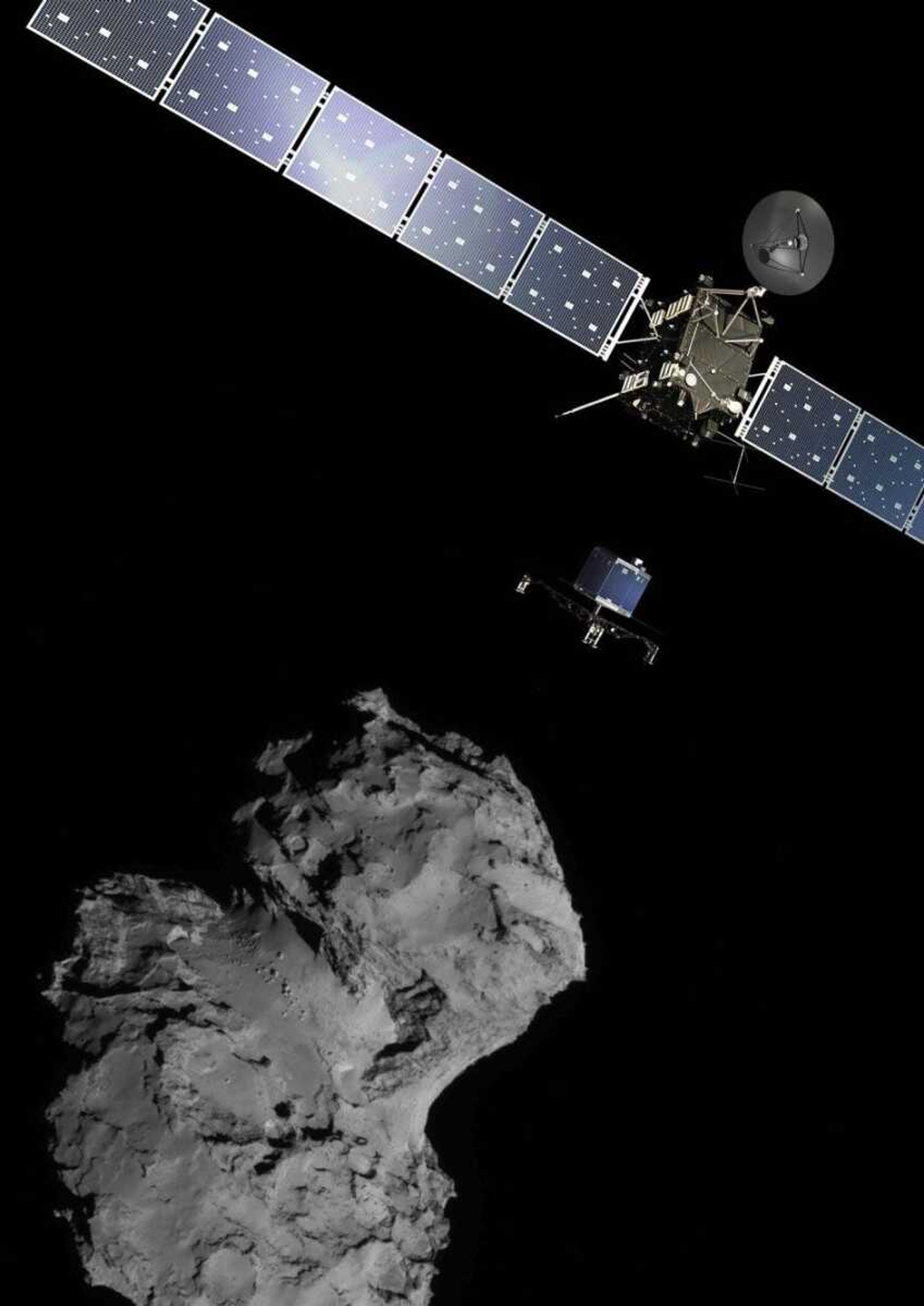Cosmic 1st: European spacecraft lands on comet
DARMSTADT, Germany (AP) -- The European Space Agency celebrated a cosmic touchdown Wednesday by successfully landing a spacecraft on a comet for the first time in history. The agency said it has received a signal at 1603 GMT (11:03 a.m. EST) from the 100-kilogram (220-pound) Philae lander after it touched down on the icy surface of the comet named 67P/Churyumov-Gerasimenko...
DARMSTADT, Germany (AP) -- The European Space Agency celebrated a cosmic touchdown Wednesday by successfully landing a spacecraft on a comet for the first time in history.
The agency said it has received a signal at 1603 GMT (11:03 a.m. EST) from the 100-kilogram (220-pound) Philae lander after it touched down on the icy surface of the comet named 67P/Churyumov-Gerasimenko.
"We definitely confirm that the lander is on the surface," said flight director Andrea Accomazzo.
While further checks are needed to ascertain the state of the lander, the fact that it is resting on the surface of the speeding comet is already a huge success. It marks the highlight of the decade-long Rosetta mission to study comets and learn more about the origins of these celestial bodies.
The head of the European Space Agency underlined Europe's pride in having achieved a unique first ahead of its U.S. counterpart NASA.
"We are the first to have done that, and that will stay forever," said ESA director-general Jean-Jacques Dordain.
The landing caps a 6.4 billion-kilometer (4 billion-mile) journey begun a decade ago.
Rosetta, which was launched in 2004, had to slingshot three times around Earth and once around Mars before it could work up enough speed to chase down the comet, which it reached in August. Rosetta and the comet have been traveling in tandem ever since at 41,000 mph (66,000 kph).
The mission will also give researchers the opportunity to test the theory that comets brought organic matter and water to Earth billions of years ago, said Klim Churyumov, one of the two astronomers who discovered the comet in 1969.
Online:
http://new.livestream.com/ESA/cometlanding
Follow Frank Jordans on Twitter at http://www.twitter.com/wirereporter
Geir Moulson in Berlin contributed to this report.
Connect with the Southeast Missourian Newsroom:
For corrections to this story or other insights for the editor, click here. To submit a letter to the editor, click here. To learn about the Southeast Missourian’s AI Policy, click here.









